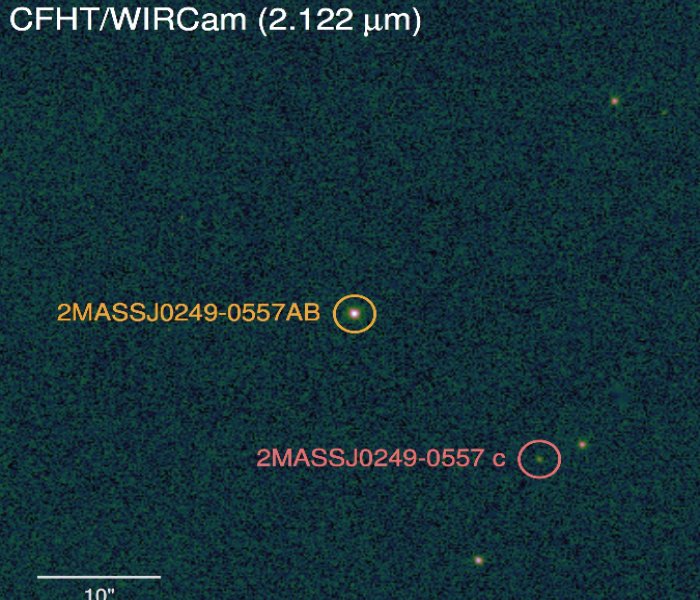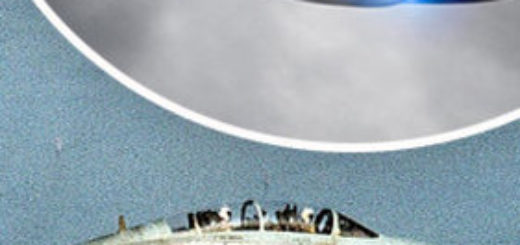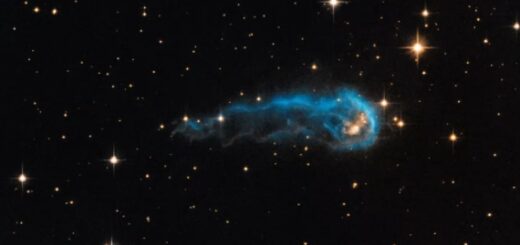Famous Exoplanet Has A Doppelgänger – Astronomers Say
Astronomers have imaged a new planet, and it appears nearly identical to one of the best studied gas-giant planets. But this doppelgänger differs in one very important way: its origin.
“We have found a gas-giant planet that is a virtual twin of a previously known planet, but it looks like the two objects formed in different ways,” said Trent Dupuy, astronomer at the Gemini Observatory and leader of the study.

Direct Wircam image of 2MASS 0249 system taken wiht CFHT’s infrared camera WIRCam. 2MASS 0249c is located 2000 astronomical units from the host brown dwarfs that are unresolved in this image. Credits: T. Dupuy, M. Liu
Dupuy and Michael Liu, astronomer at the University of Hawai`i Institute for AstronomyLiu along with other collaborators who have identified the first case of such a planetary doppelgänger, say that one object has long been known: the 13-Jupiter-mass planet beta Pictoris b, one of the first planets discovered by direct imaging, back in 2009.
It has been determined that the new object, dubbed 2MASS 0249 c, has the same mass, brightness, and spectrum as beta Pictoris b.
“To date, exoplanets found by direct imaging have basically been individuals, each distinct from the other in their appearance and age. Finding two exoplanets with almost identical appearances and yet having formed so differently opens a new window for understanding these objects,” said Liu, astronomer at the University of Hawai`i Institute for Astronomy, and a collaborator on this work.
After discovering this object with the Canada-France-Hawaii Telescope (CFHT), Dupuy and collaborators then determined that 2MASS 0249 c and beta Pictoris b were born in the same stellar nursery. On the surface, this makes the two objects not just look-alikes but genuine siblings.
The host for beta Pictoris b is a star 10 times brighter than the Sun, while 2MASS 0249 c orbits a pair of brown dwarfs that are 2000 times fainter than the Sun. Furthermore, beta Pictoris b is relatively close to its host, about 9 astronomical units (AU, the distance from the Earth to the Sun), while 2MASS 0249 c is 2000 AU from its binary host.
These arrangements suggest that the planets’ upbringings were not at all alike. The traditional picture of gas-giant formation, where planets start as small rocky cores around their host star and grow by accumulating gas from the star’s disk, likely created beta Pictoris b. In contrast, the host of 2MASS 0249 c did not have enough of a disk to make a gas giant, so the planet likely formed by directly accumulating gas from the original stellar nursery.
“2MASS 0249 c and beta Pictoris b show us that nature has more than one way to make very similar looking exoplanets,” says Kaitlin Kratter, astronomer at the University of Arizona and a collaborator on this work.
“beta Pictoris b probably formed like we think most gas giants do, starting from tiny dust grains. In contrast, 2MASS 0249 c looks like an underweight brown dwarf that formed from the collapse of a gas cloud. They’re both considered exoplanets, but 2MASS 0249 c illustrates that such a simple classification can obscure a complicated reality.”



 Creators of mankind
Creators of mankind Description of “Tall white aliens”
Description of “Tall white aliens” Where they came from?
Where they came from? About hostile civilizations
About hostile civilizations The war for the Earth
The war for the Earth “Tall white aliens” about eternal life
“Tall white aliens” about eternal life Video: “Nordic aliens”
Video: “Nordic aliens” Aliens
Aliens Alien encounters
Alien encounters The aliens base
The aliens base UFO
UFO Technology UFO
Technology UFO Underground civilization
Underground civilization Ancient alien artifacts
Ancient alien artifacts Military and UFO
Military and UFO Mysteries and hypotheses
Mysteries and hypotheses Scientific facts
Scientific facts


















